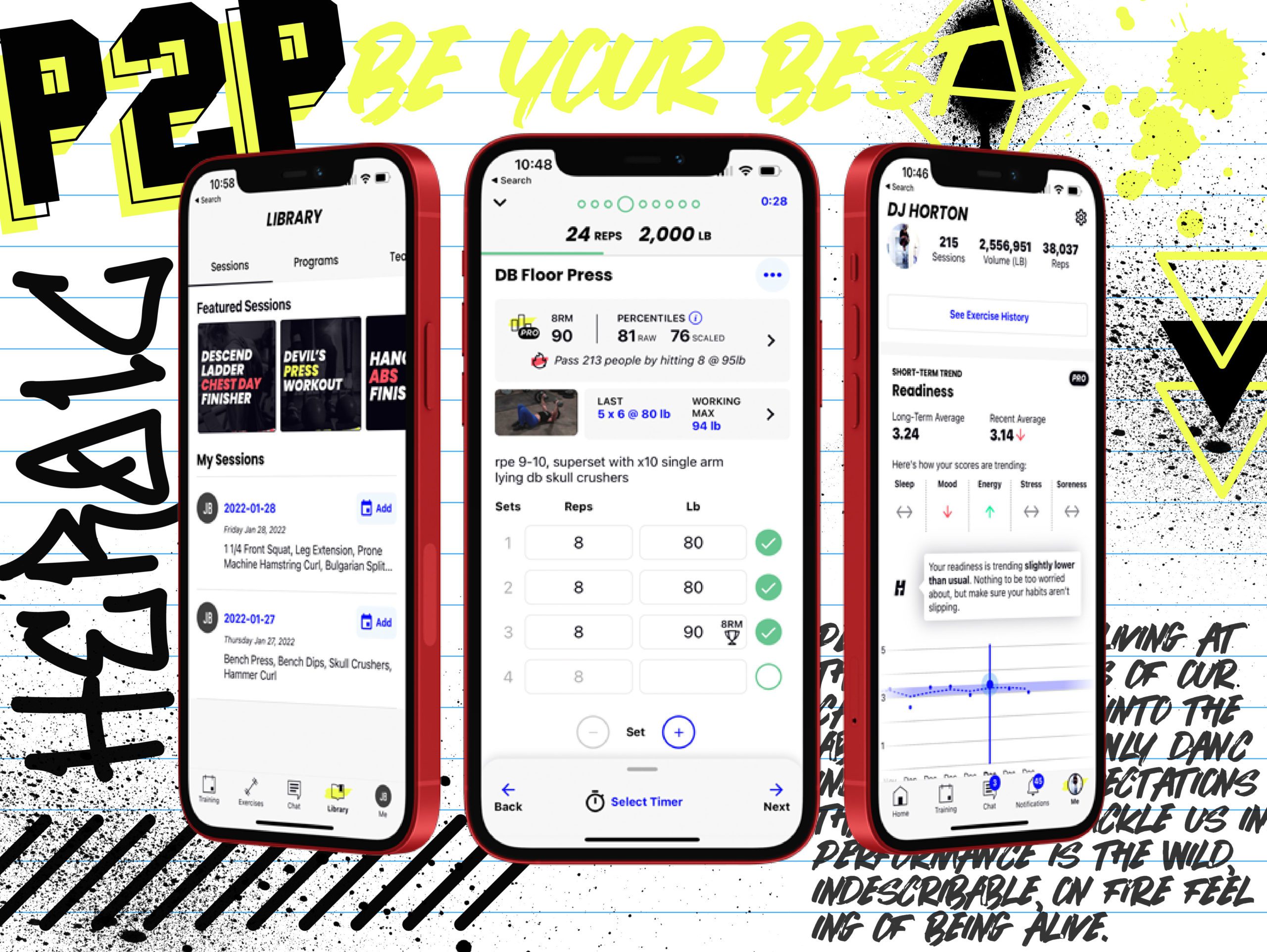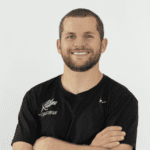3 Effective Ways to Break Your Plateau And Build More Muscle

Billy Ward is a former Division I and professional lacrosse athlete. He’s been helping athletes of all ages stay in the game and improve their performance for over a decade. He believes there’s no end date to reaching your athletic goals, and he knows how to break through a fitness slump. In this blog, he’ll explain why and how these strategies will put you back on track for ultimate muscle gains and strength. Check out his sample week of workouts!

Rediscover Your Love & Motivation For the Gym
If you have a strength program you’re working through, don’t be too surprised when your progress stalls and your numbers stagnate. It’s normal, and it happens to most athletes at some point.
You’re not sure what to do next and you’re ready to jump ship on your current program after weeks of little progress. Sound familiar? We’ve ALL been there. Believe me.
It’s easy to think about doing something complicated to get out of your rut, but the key to your success is progressive overload. To get results, you need to find strategies that allow you to continue creating the stimulus that prompts your body to adapt.
The problem is, it’s easy to get stuck at the same weight or the same volume (sets x reps x weight lifted) for extended periods of time. You might never realize you need to push your body harder to adapt beyond where you’ve already been.
One strategy to break through this rut is to vary the rep scheme and intensity (weight), but I suggest three other strategies to break your plateau and increase your overall strength.
Add Density Sets to Increase Your Overall Workload
Density sets use a specific time to dictate how long you’re working. Typically, you’ll pick 1-2 exercises, set a clock for a programmed amount of time, then complete as many sets of those two exercises as possible.
Density sets are an easy way to increase the overall amount of work on a particular exercise.
Depending on the time, most people complete more sets of a given exercise than if they were doing a traditional set scheme. Who doesn’t work faster with a clock ticking in the background?
How to Use Density Sets
- Pick 1-2 opposing muscle group exercises — squat, press, pull (think squat and dumbbell row or bench press and deadlift)
- Set a timer for 8-10 minutes.
- Add time each week to increase your volume.
- If doing unilateral exercises (lunges, single arm rows, etc.), consider adding more time.
Use a weight you can do for only 8-10 reps max for each exercise.
- Complete five reps of each movement as many times as possible in the 8-10 minutes.
- If you get to a point where you can’t complete five repetitions, simply complete as many quality reps as you can.
- Keep track of how many reps/sets you complete!
- This works best with major compound exercises like bench press, squats, chin-ups, deadlifts, etc.
You Work too Hard to Not See Progress
Find Your Perfect Training Plan
Options for Every Goal
Training plans from real coaches covering any goal, fitness level, and number of sessions per week.
The Best Coaches
Get coached by the best. Olympians, ex-NFL stars, Titan Games Winners, Sport Scientists and more.
Starting at $1/ day
With many options including a free 7 day trial, you can try out programming before you commit.
Do “Every Minute on the Minute (EMOM)” Workouts for Maximum Muscle Growth
EMOM workouts involve picking an exercise or a rotation of exercises and performing a programmed amount of repetitions on the top of every minute for a set amount of time. Let’s say you’re doing a 10 minute EMOM of 3 reps bench press at a moderate-heavy weight. You would start the clock, perform three reps, rest for the remainder of the minute, then repeat until 10 minutes is up.
Without going into a full-on science lecture, we need a challenging amount of weight to recruit the maximum amount of muscle fibers to get the job done. This recruitment ultimately forces the body to adapt and stimulates muscle growth.
With EMOMs, fatigue grows as you move further and push closer to failure with each consecutive set. The idea is to push your body to increase overall force production, thus stimulating higher levels of muscle growth.
Whoa… let’s all take a breath now.
How to Include EMOMs in Your Training
- There are a number of zones you can work through, but let’s focus on two:
- 75-85% of your 1 repetition maximum = 3 reps on the top of every minute for 8-12 minutes
- 85-90% of your 1 repetition maximum = 2 reps on the top of every minute for 6-10 minutes
- Pick your exercise(s), set the timer, and go!
- This works great with major compound exercises like bench press, squats, chin-ups, deadlifts, etc. But you can also rotate between one weightlifting movement and a set number of calories on a cardio machine. The options are endless.

Level Up Your Training
With TrainHeroic’s immersive training app
TrainHeroic does everything you wish your old gym notebook could do.
Take the guesswork out of training with built-in exercise instruction and basic training programs. Compete against yourself and others. Track your performance and readiness. Smash your goals.

Lift Heavier Loads with Cluster Sets
With the rest break built into the set, you have the ability to use a heavier load for that particular set vs. completing a consecutive amount of repetitions. Think of the difference between completing 8 straight repetitions vs. 2 repetitions, rest 20 seconds, 2 repetitions, etc.
How to Work in Cluster Sets
- Use a weight you can only do 4-5 reps max for that particular exercise.
- Complete 2 reps, pause for 10-20 seconds, repeat 3 more times (8 total repetitions)
- Rest for 2-3 minutes before repeating for 3-5 total sets
- This also works great with compound exercises like bench press, squats, chin-ups, and deadlifts.
Effectively Programming Density Sets, EMOMs, & Cluster Sets
Now, let’s piece this whole thing together. Some think they should try to do all three of these strategies in one training session, but I don’t suggest this. In fact, if you’re doing them right, you likely can’t do all of it in one session. The fatigue will smack you in the face.
Pick one strategy and use that in your training for 3-6 weeks, then work into a new strategy. Or, take two strategies and try them throughout the week. For instance, a 3-day training split could look something like this:
Day 1:
A1) Squat variation (EMOM)
3 reps EMOM @ heavy weight for 8 total minutes
Add your accessory work here next.
Day 2:
A1) Vertical push variation (push press, overhead press, incline press, etc.) x 3-6 reps
A2) Row variation x 3-6 reps
Work these in a traditional set/rep scheme (3 sets x 3-6 repetitions)
Add your accessory work here next.
Day 3:
A1) Deadlift variation x (2, 2, 2, 2)
Cluster set with 10-20 second rest between the 2 repetitions
A2) Barbell Bench variation x (2, 2, 2, 2)
Cluster set with 10-20 second rest between the 2 repetitions
Add your accessory work here next.
And there you have it! If you’re stuck with your training or have hit a plateau, try using these 3 strategies to break through and reach a new level of muscle soreness. When done right, these can be an absolute game changer.
Want Training Tips, Exercise Guides & Knowledge Bombs Sent to Your Inbox?
Sign up for the FitNerd newsletter from TrainHeroic
Related articles
3 Ways to Improve Mobility Without Stretching
Are you still trying the endless foam rolling and stretching exercises to get that deep squat position? We know how important mobility is for great, or even GOOD performance. All professional athletes have some comfortability in end ranges of motion. So, what else do...
The Ultimate Guide to Lunges: Queen of all Glute Exercises
Your glutes are the largest muscle group in your body. They’re responsible for almost everything your legs do—walking, running, jumping, squatting, lunging, and just standing upright. As far as moving through space goes, strong glutes are the bedrock of overall...
A Beginner’s Guide to Steel Mace Training
Author: Jesse Grund
Mace training will make you a better mover without it’s not confining you to a fixed space or predetermined range of motion. Second, it’s an offset load with 80 to 90 percent of the weight in the head. You’re also constantly having to resist rotation, which creates greater core engagement.

Join the community
Sign up for the latest training news and updates from TrainHeroic

About TrainHeroic
Support
Made with love, sweat, protein isolate and hard work in Denver, CO
© 2021 TrainHeroic, Inc. All rights reserved.






